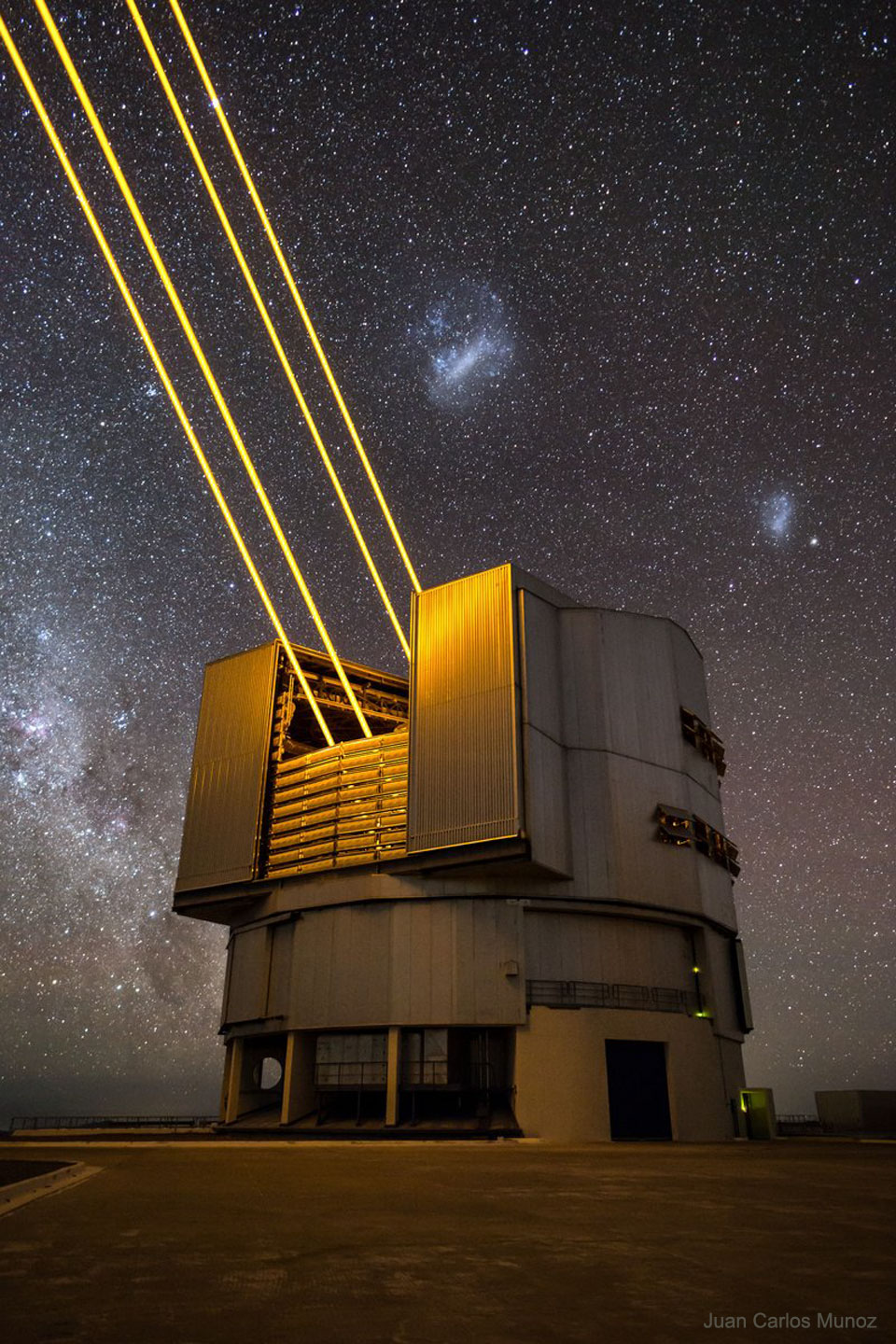2021年02月10日
Firing Lasers to Tame the Sky
Image Credit & Copyright: Juan Carlos Muñoz / ESO; Text: Juan Carlos Muñoz
Explanation: Why do stars twinkle? Our atmosphere is to blame as pockets of slightly off-temperature air, in constant motion, distort the light paths from distant astronomical objects. Atmospheric turbulence is a problem for astronomers because it blurs the images of the sources they want to study. The telescope featured in this image, located at ESO’s Paranal Observatory, is equipped with four lasers to combat this turbulence. The lasers are tuned to a color that excites atoms floating high in Earth’s atmosphere — sodium left by passing meteors. These glowing sodium spots act as artificial stars whose twinkling is immediately recorded and passed to a flexible mirror that deforms hundreds of times per second, counteracting atmospheric turbulence and resulting in crisper images. The de-twinkling of stars is a developing field of technology and allows, in some cases, Hubble-class images to be taken from the ground. This technique has also led to spin-off applications in human vision science, where it is used to obtain very sharp images of the retina.
Tomorrow’s picture: open space
发射激光以驯服天空
影像提供与版权: Juan Carlos Munoz; 文稿提供: Juan Carlos Munoz
说明: 星星为何会闪烁?这要怪地球的大气,因为温度稍有差异的一团团气胞不停的湍动,让遥远天体的光路发生扭曲。对天文学家而言,大气湍流很是问题,因为它会使他们想要研究的源图像变得模糊。这张主题影像所呈现的望远镜,隶属于欧南天文台的帕拉纳天文台,就配备了4部激光以降低大气湍流的影响。所选用的激光之颜色,是用以激发流星遗留在高层大气中的钠原子。记录这些形似人造恒星的钠原子光斑之闪烁后,再据之每秒可变形数百次的镜面,得以去除闪烁取得较清晰的影像。如何消除恒星的闪烁,是一项发展中的科技,而在某些条件下,让地面观测能取得哈勃望远镜等级的影像。此外,从这项科技衍生的人类视觉科学应用,让科学家得以获得极端清晰的视网膜影像。
明日的图片: open space

